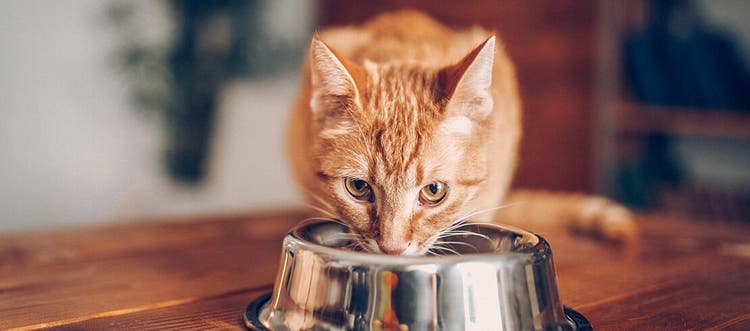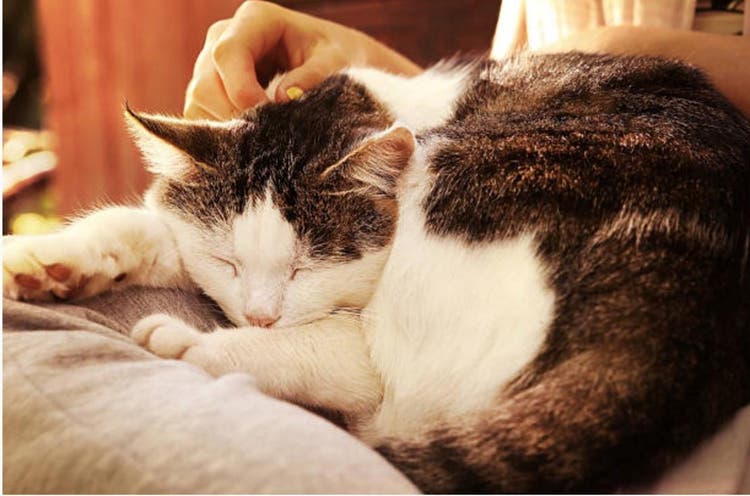Reviewed by Reviewed by Dr Sylvia Shortreed BVSc and Dr Abbie Lam DVM
It's not always easy to tell if your cat is happy. They may show their love with purrs and affectionate rubs, but some cats are more aloof than others, and it can be difficult to decipher their vocalisations and behaviours.
Whether you're a new or experienced cat owner, there are several easy things you can do to help keep your cat happy and healthy.
1. Create ideal napping spots
Cats love to doze during the day, so why not make life more comfortable for your cat by creating perfect places to nap? Here are a few ideas:
- Place a cushion or install a special padded perch near a sunny window to create a space for your cat’s daytime ‘catnaps’.
- If you have a garden, think about where your cat can sleep outside – preferably somewhere dry and sheltered, with a bit of shade, such as beneath an awning.
- Purchase a cat tree to give your cat somewhere to climb up, sit or nap. Cats are natural climbers and feel safe perched up high, where they can look down on their domain or snooze uninterrupted.
2. Treat your cat to some toys
Cats enjoy playtime, and providing a range of toys will stimulate their natural instincts and curiosity. The options are numerous: toys to chase, toys to pounce on, toys for interactive play and more. You can also buy special laser pointers that give cats a spot of light to chase (remember not to shine a laser beam directly into eyes).
You can easily make your own toys as well. A simple ball will keep most cats amused for ages, as they paw it and pounce on it as if it were a mouse. Your cat will also enjoy playing with string or ribbon tied to a stick or a door handle - just make sure the string is secure to avoid strangulation or choking, and also ensure no strings or part of the string were bitten off and swalloed.
3. Give your cat its own space
As you’ve probably gathered by now, cats are fairly independent creatures. They like to have their own space to sleep and meet their basic needs.
Create a special area in your home with a bed, a scratching post and a litter box for your cat. But keep their food and water in a different place – cats prefer not to eat where they relieve themselves. Place the litter box in a well-lit, quiet part of the house to encourage your cat to use it.
4. Learn how and where your cat likes to be petted
While cats are undoubtedly independent creatures, they can crave affection and most of them love to be petted. Just make sure you’re petting them in the right way!
Cats enjoy their fur being stroked from head to tail, not in the other direction. Your cat will probably also enjoy being stroked behind the ears and under their chin, but stay away from their tail and paws.
If a child wants to stroke your cat, supervise them – you don’t want your cat lashing out for being stroked the wrong way or having its tail pulled!
5. Establish a routine and keep your cat’s space clean
Most cats prefer a stable routine so feeding times should be regular and structured (e.g. breakfast, lunch and dinner at the same times each day, or just breakfast and dinner if your cat eats twice a day). If you work irregular hours, consider using an automatic feeding timer. If you leave food out all day, many cats will happily eat it, so avoid this or you’ll have a fat cat!
Cleaning your cat’s space is as important as setting it up. Make sure to frequently change your cat’s litter, daily or at least every other day (and if you have more than one cat, make sure to have one litter box per cat, plus one extra).
Cats prefer neat spaces, so by regularly cleaning their food station, litter box and bed your cat will be much happier for it.
6. Keep them safe from parasites
No doubt you have heard about the risk of unwanted parasites like fleas and ticks in your cat’s fur. These can cause discomfort and disease in humans as well as pets – even in indoor cats! – so, it’s vital to nip them in the bud through routine treatment.
The parasites your cat is most at risk from will depend on several factors, so ask your vet to decide which preventative methods and medications you should use. Once you have a programme in place, set reminders (perhaps on your phone or calendar) to stay on top of it – whether that’s to give your cat medication or visit the vet. A prevention regimen will help you address infestations before they have the chance to cause harm.
For flea and worm prevention, we recommend AdvocateTM, a monthly spot-on parasite preventative trusted by Australian cat owners since 2004. If you live in an area where ticks are a concern, we recommend using SerestoTM tick and flea collar for cats. With its innovative design, Seresto provides safe and long-lasting tick protection against fleas and ticks for 8 months. Remember to read product leaflets for full instructions.
Your cat may not always show their appreciation, but these simple steps will keep them purring and happy throughout their life.









